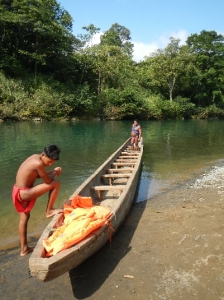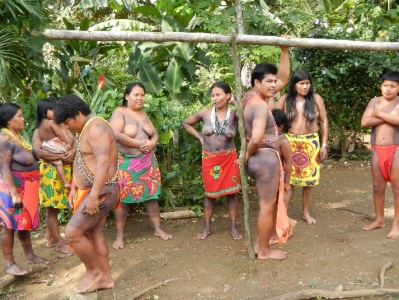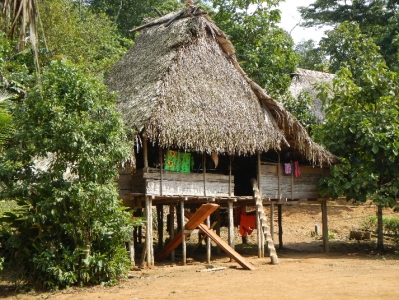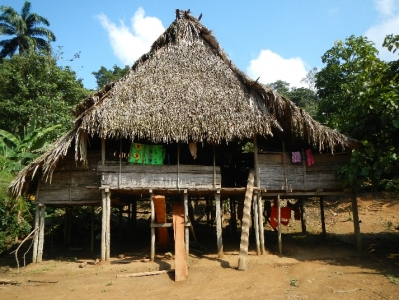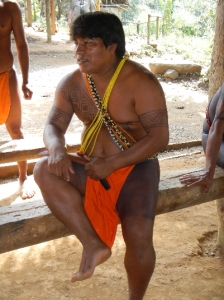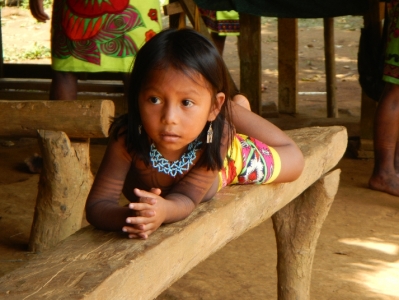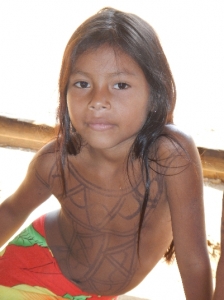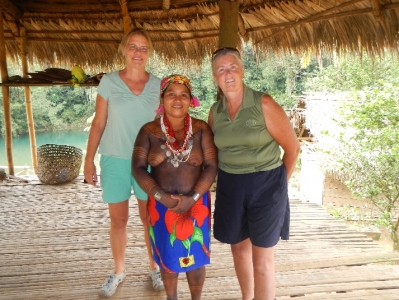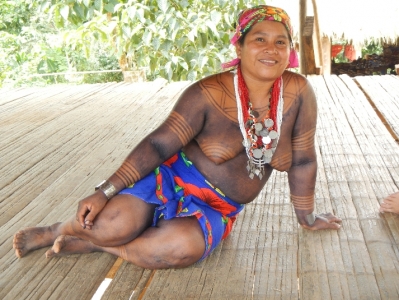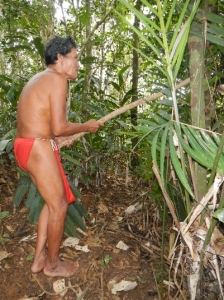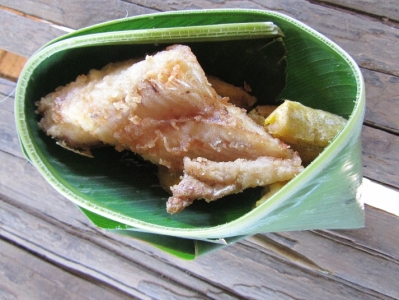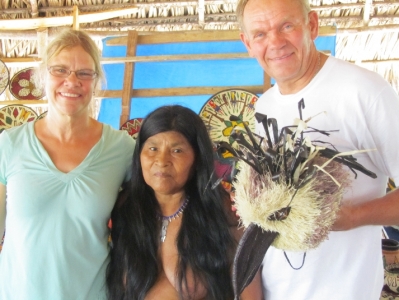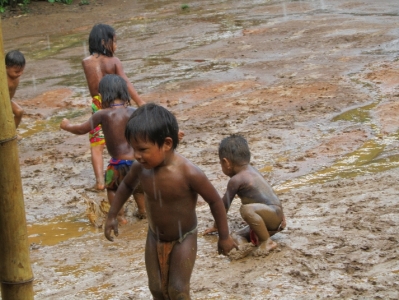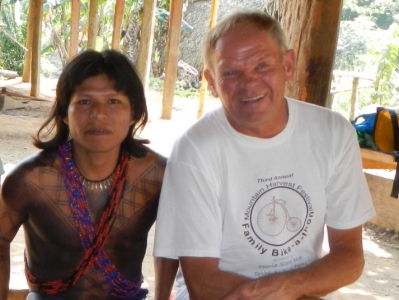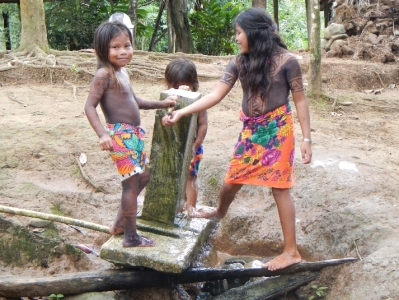Today was a day straight out of National Geographic magazine. More than ten years ago, several families of Embera indians original from the remote rainforest tribes of Darien’s jungle migrated to Chagres River’s bank, situated at less than hour and half from Panama City. The villages are built on a small rise, set approximately 100 feet in from the river.
The houses of the village are set about 20– 50 feet apart atop the rise on posts, with no walls, but tall thatched roofs. Their houses are raised off the ground about eight feet. The houses stand on large posts set in the ground, and have thatched roof made from palm fronds. All the joinery is with vines. There are few walls. Hanging from the supporting posts and beams are hammocks, baskets, pots, bows and arrows, mosquito nets, clothing and other items. The floor is made of split black palm trunks. The houses are accessed from the ground via a sloped log with deep notches for a ladder. They sometimes turn the notches face down at night or if the family is away or wants privacy, the down turned notches represent a closed door.
The Indians have their own form of government and live by their own set of unwritten rules. They avoid relying on any branch of the Panamanian government, and choose to not assimilate into Panamanian society. Although they do go into the city from time to time and since it is illegal in Panama to appear shirtless, they own some western clothes, but choose to remain dressed in their cultural garb while in their village.
The men sport “bowl cut” hair styles, and when not in towns, still wear nothing but a minimal loin cloth. The women wear brightly colored cloth wrapped at the waist as a skirt. Except when in towns, the women do not cover their torsos, and wear long, straight black hair. No one wears shoes. They paint their bodies with a dye made from the berry of a species of genip tree. The black dye is thought to repel insects. Using this same dye, they print intricate geometric patterns all over their bodies, using wood blocks carved from balsa wood or two bamboo shoots to make parallel lines. The women also wear silver necklaces and silver earrings; many of the necklaces being made of old silver coins. They punch a hole in the coin and run a silver chain through it. Many of the coins on these necklaces date to the 19th century and are passed down from mother to daughter.

